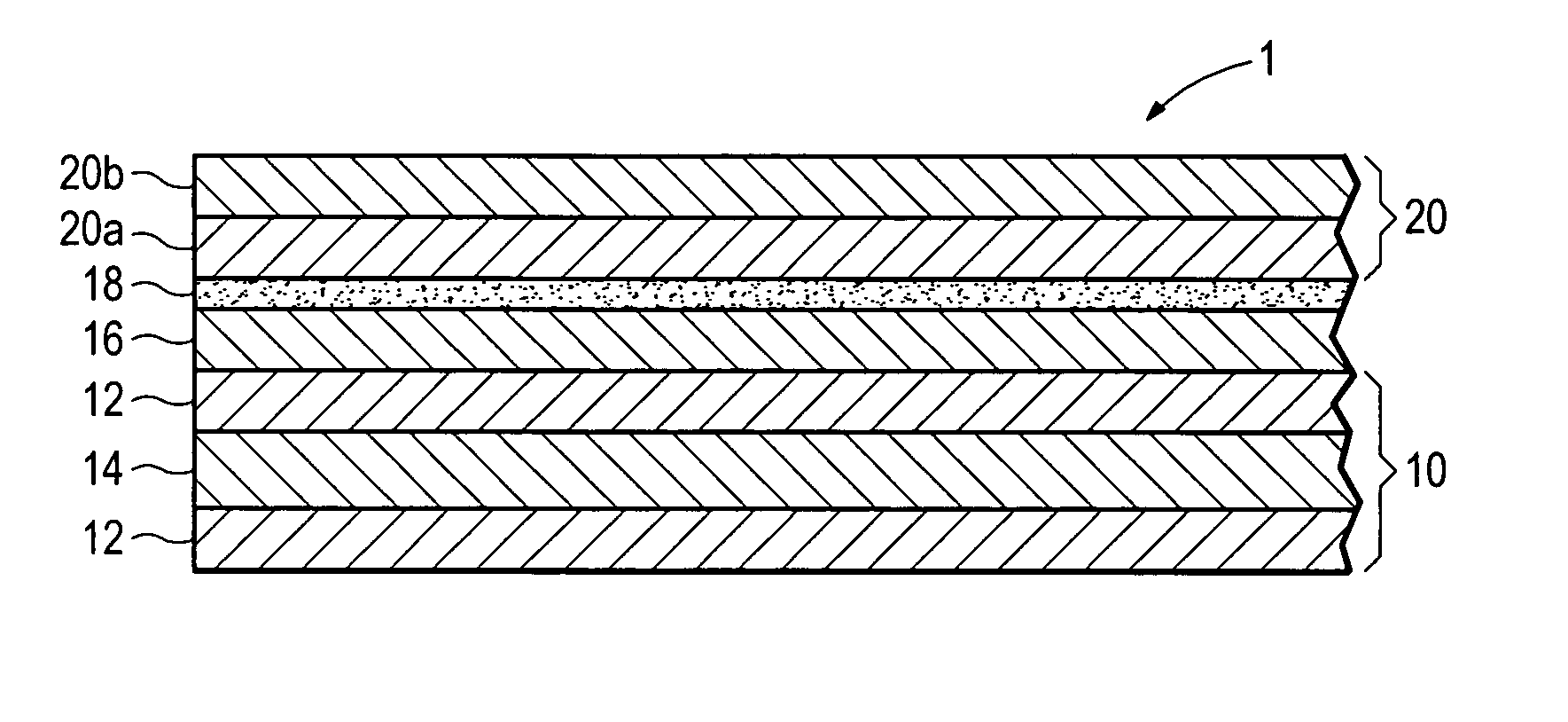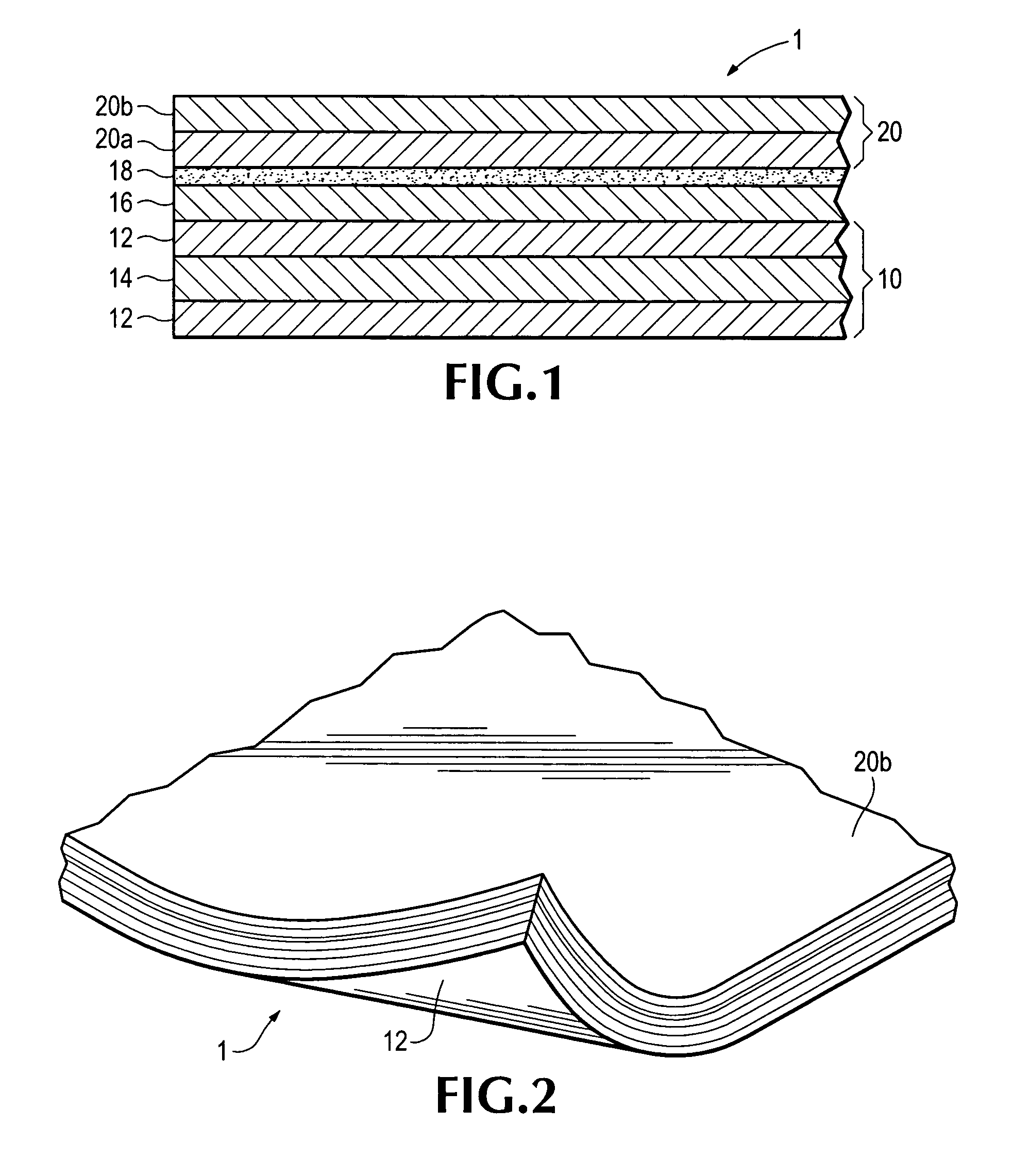Method of securing flexible solar panel to PVC roofing membrane
a technology of flexible solar panels and roofing membranes, which is applied in the direction of roof drainage, pv power plants, sustainable buildings, etc., can solve the problems of reducing the flexibility the flexible solar panel, affecting the expansion and contraction of the pvc roofing membrane, and affecting the flexibility of the flexible solar panel
- Summary
- Abstract
- Description
- Claims
- Application Information
AI Technical Summary
Benefits of technology
Problems solved by technology
Method used
Image
Examples
Embodiment Construction
[0011]Referring to the drawings, wherein the same numerals refer to the same elements, there is shown in FIGS. 1-2 a roof assembly 1 comprising a polymeric roofing membrane 10, typically consisting of two PVC layers 12 with a polyester or fiberglass reinforcement layer 14 interposed between the two PVC layers. Roofing membrane 10 may be secured in conventional fashion to a roof deck of virtually any construction, including frames or flat or curved surfaces of any material, including preexisting roofing or roofing membranes.
[0012]A second element of the roofing assembly is a plasticizer-containing PVC membrane 16 containing PVC-compatible, butyl-resistant plasticizers and optional antioxidants, flame retardants, stabilizers, colorants and other conventional additives known in the art. Exemplary such additives are phenolic antioxidants, antimony oxide and calcium carbonate as flame retardants and minor amounts of cadmium, barium and / or zinc as stabilizers. By “PVC-compatible and butyl...
PUM
 Login to View More
Login to View More Abstract
Description
Claims
Application Information
 Login to View More
Login to View More - R&D
- Intellectual Property
- Life Sciences
- Materials
- Tech Scout
- Unparalleled Data Quality
- Higher Quality Content
- 60% Fewer Hallucinations
Browse by: Latest US Patents, China's latest patents, Technical Efficacy Thesaurus, Application Domain, Technology Topic, Popular Technical Reports.
© 2025 PatSnap. All rights reserved.Legal|Privacy policy|Modern Slavery Act Transparency Statement|Sitemap|About US| Contact US: help@patsnap.com


